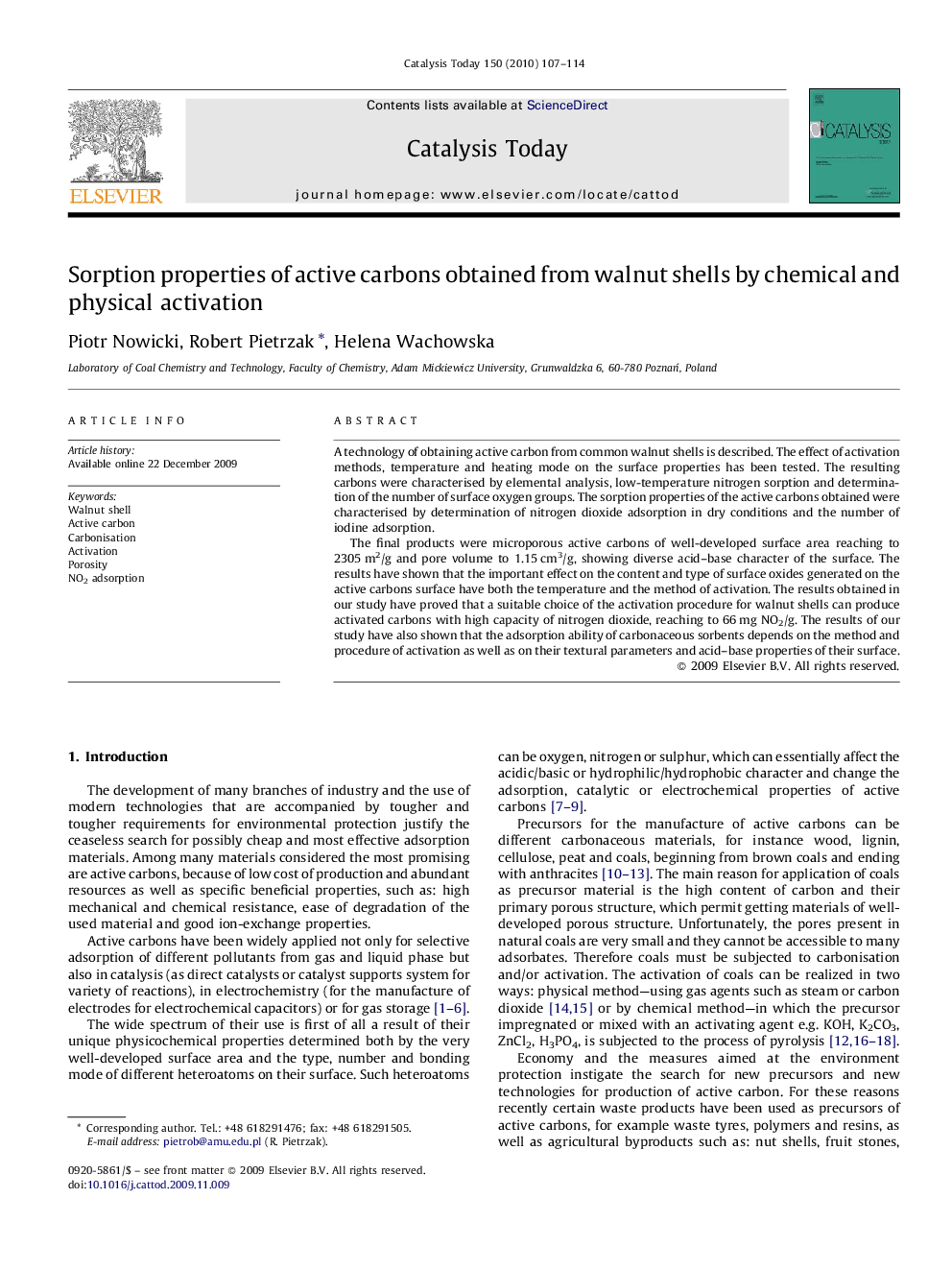| Article ID | Journal | Published Year | Pages | File Type |
|---|---|---|---|---|
| 56787 | Catalysis Today | 2010 | 8 Pages |
A technology of obtaining active carbon from common walnut shells is described. The effect of activation methods, temperature and heating mode on the surface properties has been tested. The resulting carbons were characterised by elemental analysis, low-temperature nitrogen sorption and determination of the number of surface oxygen groups. The sorption properties of the active carbons obtained were characterised by determination of nitrogen dioxide adsorption in dry conditions and the number of iodine adsorption.The final products were microporous active carbons of well-developed surface area reaching to 2305 m2/g and pore volume to 1.15 cm3/g, showing diverse acid–base character of the surface. The results have shown that the important effect on the content and type of surface oxides generated on the active carbons surface have both the temperature and the method of activation. The results obtained in our study have proved that a suitable choice of the activation procedure for walnut shells can produce activated carbons with high capacity of nitrogen dioxide, reaching to 66 mg NO2/g. The results of our study have also shown that the adsorption ability of carbonaceous sorbents depends on the method and procedure of activation as well as on their textural parameters and acid–base properties of their surface.
